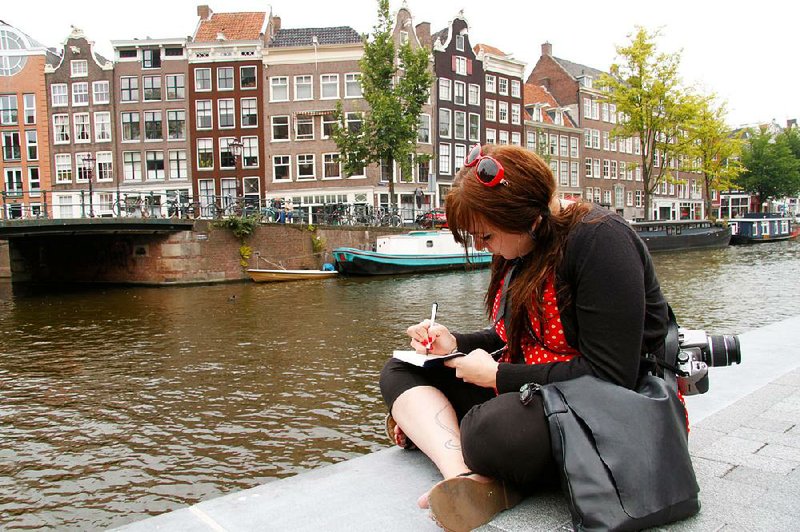When I was 18, I wrote a postcard to my grandmother from Austria, describing how I slept for free on the porch of a hostel in Innsbruck. While I wouldn’t do that now, it’s fun to reminisce about my backpacking days. Back then, bars were inundated with smoke, currency changes were required after each border crossing, and it took about nine hours to travel from London to Paris. Yet despite the changes, the adventure and thrills of good, old-fashioned vagabonding survive.
One of the most amazing changes over the past decade is the speed and ease with which you can get around. In my 20s, I traveled around Europe on a two month Eurail pass that cost about $200. I slept on trains as much as I could to save time and money. But fast and cheap transportation options - especially the proliferation of discount airlines such as Ryanair and EasyJet - have changed the way budget travelers can see Europe.
My first stop when seeking cheap flights is Skyscanner.com. This no-frills website provides a fast way to determine which European budget airlines serve the route you’re eyeing and helps you compare prices.
Although flights may look cheap at first glance, it’s important to factor in the extra costs, such as the price for getting to and from the airport. Also, since budget airlines are not making much money on your ticket, they look for other ways to pad their profits, such as charging for food and drink, priority boarding, seat reservations, checking bags, and checking in at the airport (instead of online). With a little planning, a few sacrifices, and light packing, travelers can avoid most of these costs.
One mode of transportation I advise backpackers to steer clear of is a car. While car rental prices may look enticing, this is hardly ever the cheapest option for getting around. The daily fee may be low, but the extras, such as tolls, gas, and parking, make it far more expensive than it seems. Also, Europe is dotted with automatic speed guns and cameras that will issue a ticket and track you down even across the pond. I know this because my own twenty something son was photographed speeding and received a $100 ticket with a $100 service charge tacked on by the rental company.
When it comes to economical accommodations, hostels are still some of the cheapest beds in town. But while being a member of the Hostelling International network used to be the mark of a respectable hostel, that’s no longer the case. Most independent hostels have just as high standards, and they are often more interesting and fun. The best way to find hostels these days is through Hostelworld.com.
Another way to sleep inexpensively is to rent a bed in someone’s home. Airbnb.com is a great way to find such accommodations, with its extensive list of options ranging from futons in the living room to entire apartments. You can read reviews to make sure it matches what you’re looking for, and it’s also relatively safe, as cash never trades hands (payment is handled via the website).
Technology is revolutionizing budget travel in other ways as well. During my early trips, travelers would gather at American Express company offices to share information and collect mail from loved ones back home. Today, even cybercafes are becoming dated, as most young travelers carry smartphones, tablets, or laptops and connect to Wi-Fi in either cafes or hostels.
For communicating with people back home, cell phones are cheap and easy to buy, even for a short trip. But the best deal is to make phone calls via the Internet. If both parties have iPhones and access to Wi-Fi, you can enjoy a FaceTime connection across the street or across the ocean for free. Otherwise, Skype is a good and inexpensive standby.
One recent development in Europe is the advent of free walking tours. While the tour technically doesn’t cost anything, guides work solely on tips (and they make sure to remind you of that). At first I wasn’t hot on these “free” tours, as guides - generally expatriate students who have memorized a script - emphasize stories over the strictly academic and are known to take some liberties with historical events and characters. But they’re still enjoyable, and for travelers on a budget, they provide an inexpensive way to get to know a place.
One thing I always encourage young travelers to do is to keep a journal (or these days, a blog). As a travel writer and teacher, one of my favorite discoveries is that the journal entries I wrote as a scruffy 20-year-old in 1975 still resonate with the generally much-less-scruffy 20-year-old American exploring Europe in 2013. Today the same timeless magic is there - it’s just a lot more convenient and comfortable to find it.
Send e-mail to Rick Steves at [email protected]
Travel, Pages 52 on 05/26/2013

